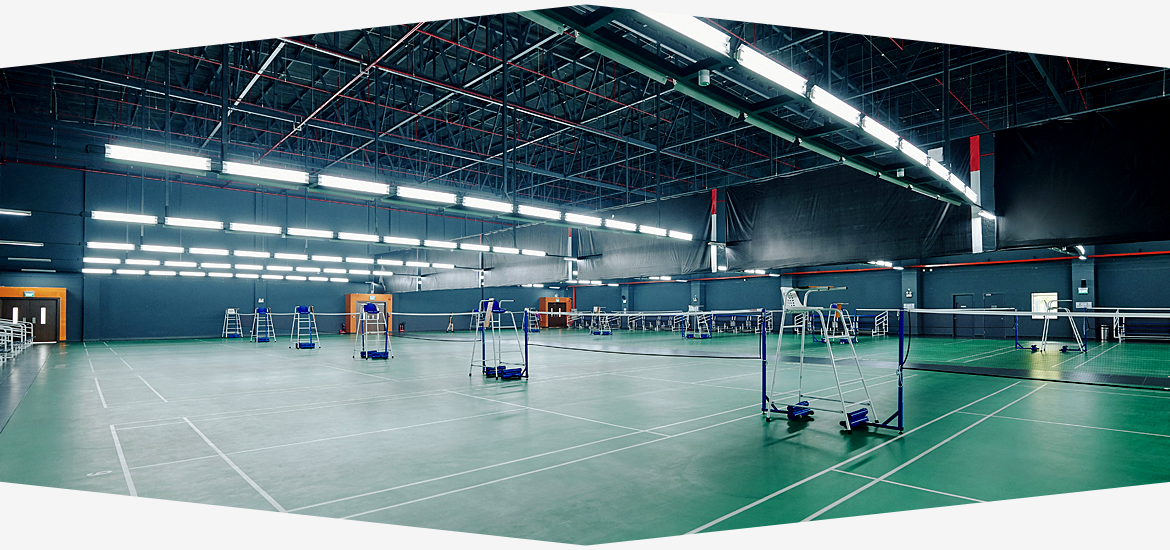Sports halls are built to handle a wide mix of activities, from fast-paced games to calm community gatherings. The space might host basketball in the morning, badminton in the afternoon, and a school play in the evening. With so much variety, lighting becomes more than a background detail. It’s a key part of making sure every activity runs smoothly, looks good, and feels comfortable for everyone involved.
Why Lighting Matters More Than People Realize
The lighting in a sports hall directly affects how well players can see the ball, the lines on the floor, and even each other. Shadows in the wrong places can cause confusion, while bright glare can make it difficult to focus. For sports that need quick reactions, such as table tennis or volleyball, even a small distraction can change the outcome of a point.
It’s not only about the players. Coaches, referees, and spectators also depend on clear visibility. If the lighting is poor, referees may struggle to make accurate calls, and spectators might miss important moments. The right setup ensures that everyone experiences the game in the best possible way.
Balancing Brightness and Comfort
Many sports have specific lighting standards to make sure conditions are fair for all participants. For example, a badminton court needs enough brightness for players to track the shuttlecock against different backgrounds, while basketball players need light that covers the entire playing area evenly.
However, brightness alone is not enough. Comfort matters too. If lights are too intense or aimed poorly, players may find themselves looking into glare during key moments. This is where careful planning comes in. A well-designed system spreads light evenly and avoids sudden bright spots or dark corners.
The Challenge of Multi-Purpose Use
Sports halls often serve more than one purpose, which makes lighting design more complex. A hall might host a five-a-side football match one day and a school concert the next. Each event has different needs. Sports require clear, bright, and even lighting across the entire floor, while performances may need softer lighting or the ability to spotlight certain areas.
That’s why many modern facilities use adjustable lighting systems. These can change brightness levels or focus light differently depending on the activity. When considering the best approach to lighting a multi-purpose sports hall, it’s worth looking at flexible systems that adapt to each use without wasting energy.
Energy Efficiency and Cost Control
Running a sports hall can be expensive, and lighting is one of the biggest ongoing costs. Old-style lights often use a lot of power and generate heat, which can even increase cooling costs in warmer months. LED lighting has changed the game by offering bright, high-quality light while using far less energy.
Energy-efficient lighting is not just about saving money. It also helps reduce the environmental impact of running the hall. Many facilities now choose systems that last longer, meaning less time and money spent on maintenance and replacements.
Safety on and off the Court
Good lighting plays a big role in safety. On the court, players need to see the floor clearly to avoid tripping over lines or bumping into others. Off the court, spectators and staff need well-lit pathways, stairs, and exits to move around safely.
Emergency lighting is also critical. In the event of a power cut, backup lights should activate immediately so people can leave the building safely. These are often required by building regulations, and checking them regularly is an important part of maintenance.
Creating the Right Atmosphere
While performance and safety are top priorities, atmosphere also matters. Lighting can influence how a space feels, making it more welcoming for community events or more intense for competitive games. Warmer lighting might be used for social gatherings, while cooler, brighter light is better for active sports.
Some modern systems even allow for coloured lighting or effects during special events. While not essential, these features can make the space more engaging and encourage more people to use the facility.
Planning for Long-Term Success
The best sports hall lighting systems are designed with the future in mind. That means thinking about how the hall will be used over the next decade, not just what’s happening right now. A flexible system can adapt to new sports, changing regulations, and even different types of community use.
Consulting with lighting specialists early in the process can prevent costly mistakes later. They can help determine the right type, placement, and number of lights for the space.
Maintenance and Ongoing Care
Even the best lighting system needs regular checks. Dust, dirt, and even small insects can collect on lights over time, reducing brightness. Keeping the fixtures clean ensures consistent performance and avoids unnecessary strain on the system.
It’s also worth keeping track of how often the lights are used and how they perform over time. Many modern systems have monitoring features that can show when a light is nearing the end of its life, making it easier to replace parts before problems occur.
Final Thoughts
Sports hall lighting is far more than a technical detail—it’s a core part of making sure every game, event, or gathering runs smoothly. The right setup improves visibility, boosts safety, saves energy, and helps create the right atmosphere for different activities.

